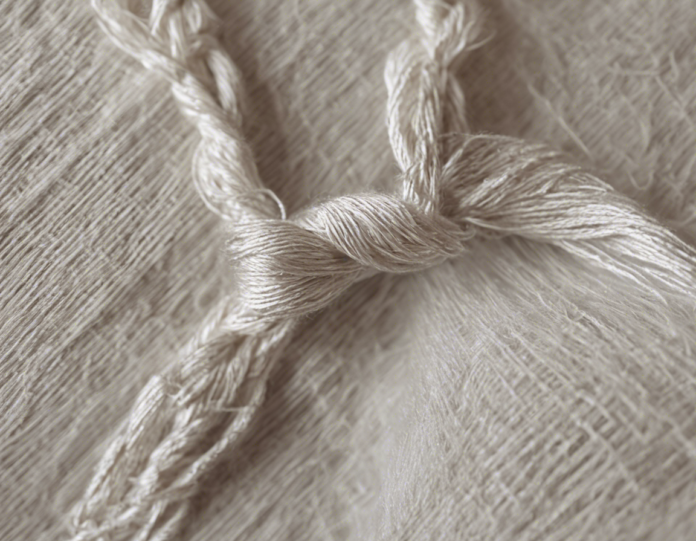Introduction
Sewing is an ancient craft that has played a crucial role in human civilization for centuries. From creating clothing to producing household items and decorations, sewing has been a fundamental skill passed down through generations. One of the key components in any sewing project is the thread used to bind fabric together. Thread quality can significantly impact the outcome of a sewing project, making it essential to understand the importance of using high-quality thread.
Understanding Thread Quality
Thread quality is determined by various factors, including fiber content, thickness, twist, and finish. Fiber content refers to the material the thread is made of, with common options including cotton, polyester, silk, and nylon. Each type of fiber has different characteristics that can affect the strength, durability, and appearance of the final seam.
Thickness is another critical factor in thread quality. The thickness of the thread is measured in terms of weight, with lower weight numbers indicating finer threads and higher weight numbers representing thicker threads. The thickness of the thread should be appropriate for the fabric and the type of stitch being used to ensure a secure and visually pleasing seam.
Twist refers to the way the individual fibers of the thread are twisted together. A balanced twist is essential for preventing the thread from unraveling during sewing. Over-twisted or under-twisted threads can lead to breakage and tension issues, affecting the quality of the stitch.
Finish is the treatment applied to the thread to improve its performance and appearance. A high-quality thread will have a smooth finish that reduces friction, prevents tangling, and enhances the overall look of the seam.
Benefits of Using High-Quality Thread
-
Strength and Durability: High-quality thread is stronger and more durable, ensuring that your seams will hold up over time, even with frequent wear and washing.
-
Smooth Stitching: Quality thread glides smoothly through the fabric, reducing the risk of snagging, breaking, or looping during sewing.
-
Enhanced Appearance: Superior thread creates neater, more professional-looking seams that enhance the overall quality of your finished project.
-
Colorfastness: High-quality thread is less likely to fade or bleed onto the fabric, ensuring that your colors remain vibrant and true.
-
Reduced Maintenance: Quality thread is less prone to breakage, tangling, or fraying, reducing the need for constant rethreading and adjustments while sewing.
Choosing the Right Thread for Your Project
When selecting thread for your sewing project, consider the following factors to ensure you are using high-quality thread that is suitable for the task at hand:
-
Fabric Type: Different fabrics require specific types of thread. For example, cotton thread is ideal for natural fibers like cotton and linen, while polyester thread is suitable for synthetic fabrics such as polyester and nylon.
-
Thread Weight: Choose the appropriate thread weight for your fabric and sewing technique. Lighter weight threads are ideal for delicate fabrics and fine stitching, while heavier weights are better suited for thicker fabrics and topstitching.
-
Color Matching: Select a thread color that complements your fabric to ensure a seamless and professional finish.
-
Project Type: Consider the intended use of the finished project when selecting thread. For items that will undergo frequent washing or heavy wear, opt for a high-quality, durable thread.
-
Brand Reputation: Choose thread from reputable brands known for producing high-quality products to ensure the best results.
Caring for High-Quality Thread
To prolong the life and performance of your high-quality thread, follow these tips for proper care and storage:
-
**Store thread in a cool, dry place away from direct sunlight to prevent fading and weakening of the fibers.
-
**Avoid exposing thread to extreme temperatures or humidity, as this can affect its strength and color.
-
**Keep thread spools and cones in their original packaging or use thread storage containers to prevent dust, dirt, and moisture from damaging the thread.
-
**Use a thread stand or thread rack to keep your thread organized and easily accessible while sewing.
-
**Check thread for any signs of damage, such as fraying or discoloration, before using it in a project to avoid potential issues during sewing.
Frequently Asked Questions (FAQs)
- Can I use the same thread for both machine and hand sewing?
Yes, you can use the same thread for both machine and hand sewing, but make sure it is suitable for the specific sewing technique and compatible with your sewing machine.
- Does the color of the thread matter when sewing?
Yes, the color of the thread can affect the overall appearance of your project. Choose a thread color that closely matches your fabric for seamless seams or select a contrasting color for decorative topstitching.
- How do I know if a thread is of good quality?
Inspect the thread for smoothness, strength, and uniformity. High-quality thread will have minimal breakage, even tension, and a consistent thickness throughout the spool.
- Can I use old or leftover thread for new sewing projects?
It is generally best to use fresh, high-quality thread for new projects to ensure optimal results. Old or leftover thread may be weakened or damaged, leading to issues during sewing.
- What should I do if my thread keeps breaking while sewing?
Check for any obstructions in the thread path, adjust the tension on your sewing machine, or try using a different needle size or type. Using high-quality thread and following proper sewing techniques can also help prevent thread breakage.
In conclusion, high-quality thread is essential for achieving professional results in your sewing projects. By understanding the factors that contribute to thread quality, choosing the right thread for your fabric and project, and properly caring for your thread, you can ensure smooth stitching, durable seams, and beautiful creations that stand the test of time.
